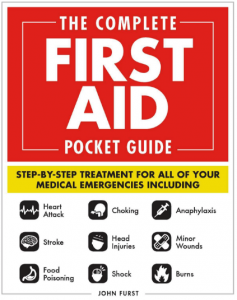Can CPR Cause Internal Bleeding?
Candidates on CPR training courses often ask about the potential dangers and risks of performing CPR on a victim. One common question is can CPR cause internal bleeding?
The short answer is yes – there is a very small risk of causing internal bleeding with CPR.
This may seem concerning to rescuers. However, it’s important to weigh up the benefits vs risks of performing CPR and not be put off from performing lifesaving resuscitation. Let’s take a look at this a little closer.
CPR is a lifesaving technique
Like most medical procedures, CPR has potential risks and benefits for the patient. Nearly every medical procedure has risks associated with it.
In order to provide effective CPR, chest compressions need to be performed hard (5 – 6cm) and fast (100 – 120 per minute).

This speed and depth of chest compressions is required in order to achieve adequate blood flow to the brain and vital organs. Research has clearly demonstrated the link between effective chest compressions and survival from sudden cardiac arrest.
Slow or shallow chest compressions will reduce the chances of survival for the cardiac arrest victim.
This speed and depth of chest compressions could cause internal damage. For example, internal bleeding or rib fractures. Internal bleeding is a very rare complication, however rib fractures are more common.
These complications are not a reason to withhold CPR. The purpose of performing CPR is to save life before the arrival of advanced medical aid. Any potential complications caused by giving CPR can be treated at a later stage, however, if CPR is not performed promptly then the chances of survival are incredibly low.
Many countries (and states in the USA) have ‘good samaritan’ laws designed to protect rescuers who take action in an emergency situation.
Do not be put off performing CPR due to fear of causing internal organ damage, bleeding or broken ribs.




